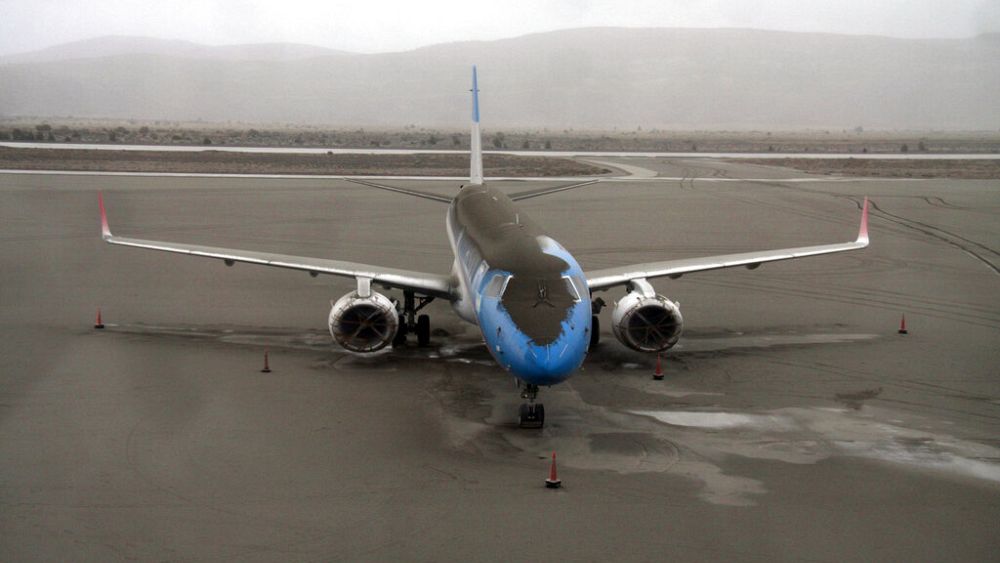Volcanic eruptions: What are the risks to aircraft?

In April 2023, the volcano Shiveluch, on the Russian peninsula of Kamchatka, caused the largest ashfall in 60 years. The village of Klyuchi, located only 47 kilometres from the volcano, was covered by a 4.5-centimetre-high layer of ash within a few hours while the ash cloud reached a height of up to 20 kilometres.
Mike Burton, Professor of Volcanology at the University of Manchester, explains that, on a global scale, the eruption will have little impact: “So the biggest impact is ashfall deposit, which is disruptive and annoying but it hasn’t produced a major impact. So that leaves the kind of regional impact due to ash in the atmosphere.”
This is in stark contrast to the 1991 Pinatubo volcanic eruption in the Philippines, which caused the atmosphere to cool by half a degree because of the liquid gas particles in the stratosphere that reflected solar radiation.
Volcanic ash clouds: a serious threat to air traffic
The regional impact also includes air traffic: the highest red alert level has been declared. Volcanic ash clouds pose a serious threat to aviation. Not only do they impair pilots’ visibility, but they can also cause serious damage to flight controls and lead to engine failure:
“What you have is a problem when you fly a jet engine, which has very hot parts and cooler parts. When a plane flies through an ash plume, it ingests that ash and it melts. It gets so hot that it actually turns into liquid that collects in the cooler parts of the jet engine. This buildup can block the engine and bring it to a halt. And if the engine fails, the aeroplane starts falling out of the sky.”, Burton said.
Several near-fatal incidents due to volcanic ash
As early as 1982, for example, a British Airways Boeing 747-200 entered an ash cloud from the Galunggang volcano over Indonesia at a cruising altitude of 12,000 metres. All engines failed and the aircraft went into a steep descent before the pilots managed to restart the engines at an altitude of around 4,000 metres and make a safe emergency landing in Jakarta.
Seven years later, there was another dramatic emergency landing of a KLM aircraft in Alaska, whose engines had failed after flying through an ash cloud from the Mount Redoubt volcano.
The problem here is that for the pilots, ash clouds are barely distinguishable from water vapour clouds, and the on-board weather radar does not detect them – even days after the eruptions, microparticles about one-hundredth of a millimetre in diameter remain in the air and spread over huge areas.
According to the US Geological Survey Agency, 129 incidents involving aircraft and volcanic ash have been documented between 1983 and 2009.
These close calls, among other incidents, put the issue of aviation safety on the radar, explained Burton:
“I think those events in the eighties were like a warning sign that things could go terribly wrong if we didn’t prevent if we didn’t steer the aircraft away from the plume.
Satellite imagery a “real revolution”
Detecting dangerous particles through satellite imagery is a “real revolution,” according to Professor Burton who said our ability to observe the Earth from space has developed over the past 20 years:
“In particular the European Space Agency has done a really good job in producing these. A new group, a new team of satellites called ‘Sentinel’. And these have opened up a lot more opportunities for how we can do this kind of monitoring from space.”
The creation of nine Volcanic Ash Advisory Centres (VAACs) designed to inform meteorological services around the world following volcanic eruptions will also help ensure that aircraft and volcanic ash have as few overlaps as possible in the future.
“They’re the people who act as the operational translation of observations to use command and control for where space is dangerous. And so that’s their main job. And in a way, the academic community is working to develop new tools to support volcanic ash advisory centres so that they can do a better job in the future of informing the airlines where the ash and gas are likely to be,” concluded Burton.
